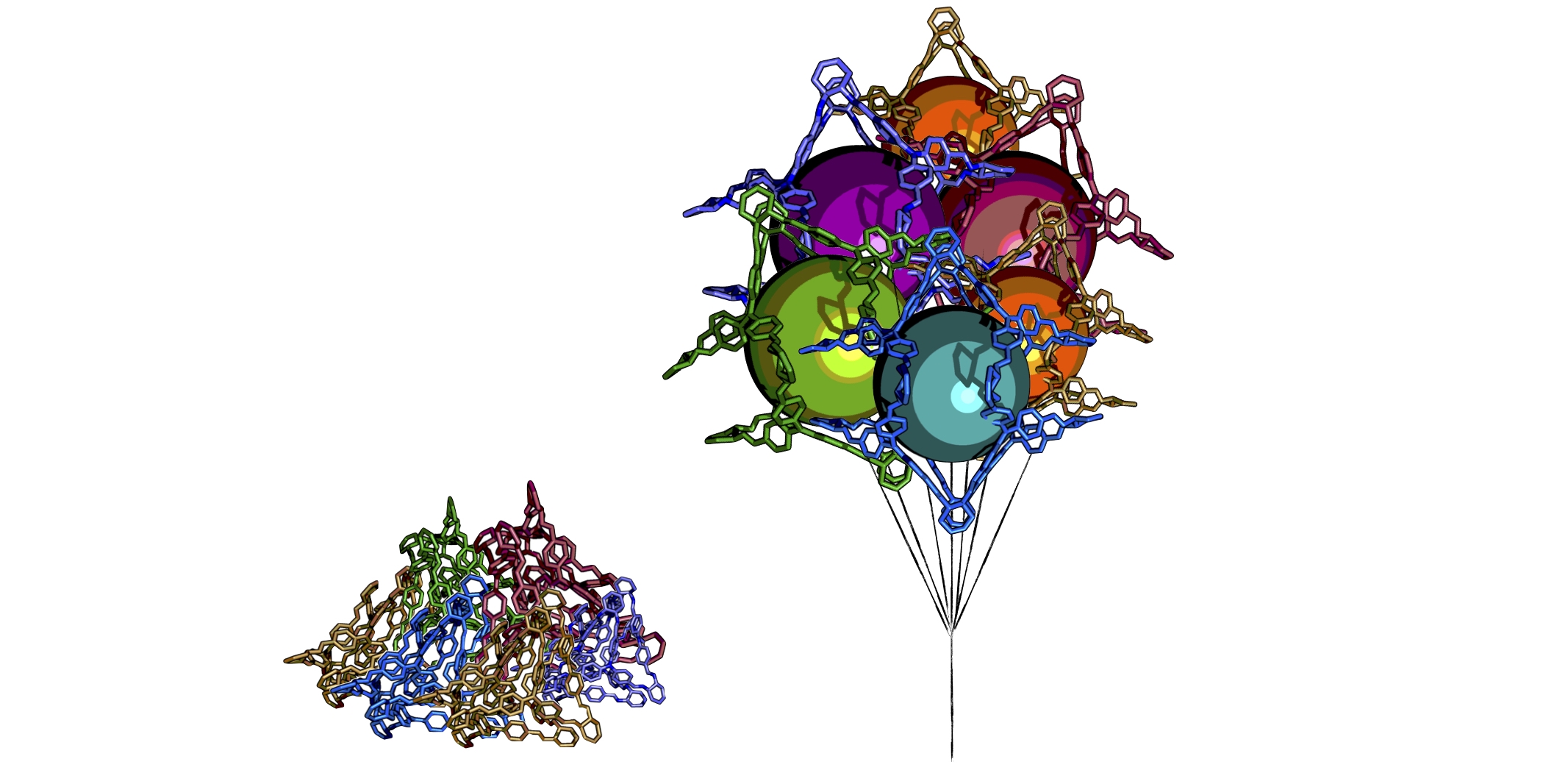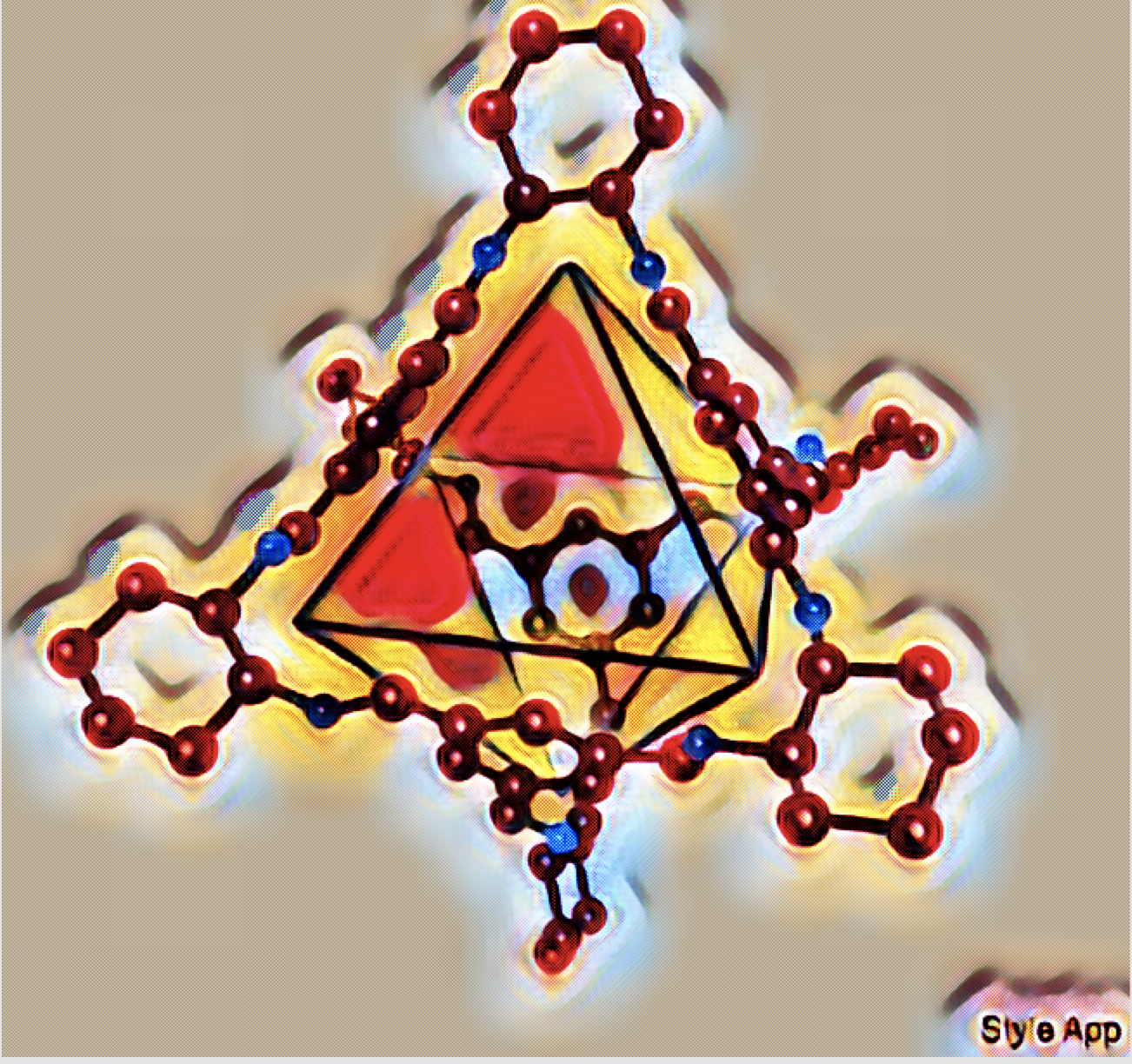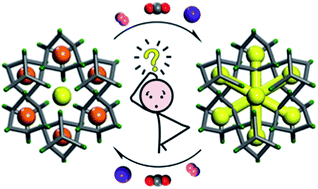Materials Hipster #4: Kim Jelfs
tags: [materials_hipster organic_crystals porous_materials Kim is a Lecturer in the Department of Chemistry in Imperial College. Kim's work focuses on using computational techniques to discover new porous materials - her group is developing some exciting new code in the area, which you can find on their Github page. Kim cut her teeth in the porous world working on zeolites at UCL, before moving as a postdoc to Andy Cooper's group in Liverpool. She holds a Royal Society URF and and ERC Starting Grant and has recently been hoovering up too many awards to keep track of. I caught up with Kim at FX Coudert's excellent "Multi-scale modelling of flexible and disordered porous materials" workshop in Paris.

What’s your all time favourite material?
It’s going to be one of my home type of materials, porous molecular materials. I’ve gone for CC3, or covalent-cage 3, which is a porous organic imine cage. Before I started my postdoc on those kind of materials, and coming from a background of inorganic zeolite type material, I remember looking at CC3 and I couldn’t even conceptually understand what it was. But then obviously I spent a lot of time modelling CC3 during my postdoc and it’s a molecule that just seems to be good for so many things. Like for molecular separations, surprisingly it’s probably the best of all the molecular materials so far for noble gas separation, yet it’s also good for xylene and chiral separations, because it’s chiral. I also like the fact that the first time it was discovered it was by Skowronek and Gawronski and they reported the molecule, but said that nothing can fit in it’s cavity, which of course turns out to be wrong, because things even as big as xylene can fit in there. Then later in the Cooper group they made it accidentally when they were trying to make a polymer. So I really like the way it just keeps turning up.

Do you have any top tips for the next big thing?
Not really a material, but what I think is emerging as being super-exciting right now is the combination of robotic automation and computer simulations and then potentially adding in AI. So I’d say the first time that is all done together is going to be really amazing. Lots of those elements are coming together, but it’s hard to pinpoint many examples where people have genuinely done a prediction on a computer and then followed it all the way through.
What’s your favourite version of the periodic table?
I work in organic materials; I don’t even think about the periodic table!!
Which element would you like to get rid of entirely?
The d-block, the entire d-block. I do computer modelling and one of the advantages of working in organic materials is that we can often use force-fields instead of quantum chemistry, and that makes it much quicker. Whenever you try to transition and do metal organic frameworks, the description of the materials just ends up as a mess.
If you could only read one journal, which one would it be?
I think, in the end if I could only read one and I wasn’t being an active research scientist any more, it would be Nature Chemistry. It gives you a good broad overview and tends to be very nicely written so you can follow the various different fields. There’s also a lot of really beautiful supramolecular stuff in there.
I actually tried to do a more data-driven answer for this. Going into my library and looking at which journals turn up the most. But then I realised that there was obvious bias as some journals publish way more than others. I couldn’t be bothered to write a proper script for it, so I was just doing it in awk [aside - awk is amazing, it’s totally the most proper scripting language!], but in that J. Phys. Chem. C came out top. Which is actually not a bad answer, it might not be super flashy, but lots of really good solid porous materials work is published there.
PRL or JACS?
Easy, JACS.
Best crafted paper you’ve read recently?
I’m just back off maternity leave, so I feel like I have an enormous backlog of reading to get through. But one of the ones I’ve been enjoying recently is from Ceriotti and Day on crystal structure prediction of organic semiconductors with machine learning. I think it’s a really interesting combination of approaches, to a problem that is difficult on lots of levels. It was recently published in Chem. Sci. after first being on ChemRxiv.
Who’s papers always make you read deeper?
Susumu Kitagawa, you know they’re always going be really sound and interesting and definitely a unique perspective on porous materials. Here are some of my personal favourites:
- Soft Porous Crystals
- Gas detection by structural variations of fluorescent guest molecules in a flexible porous coordination polymer
- Shape-Memory Nanopores Induced in Coordination Frameworks by Crystal Downsizing
What’s more important title, abstract or TOC?
Obviously title and abstract are more important. That said I do love TOC-ROFL. When I was working in Liverpool we used to try really hard to get into TOC-ROFL. We’d send lots of our TOCs in there and it was a matter of great pride when one got in.

Favourite conference?
I love the conference that we’re at now, this is the third time I’ve come. FX runs a great conference here, it’s a perfect size and you get to talk to everyone.
I really like the Gordon Nanoporous conference. It’s also relatively small and you are all housed together for a week. You end up talking to different people at every meal and it’s got a very friendly atmosphere.
The other one is ICCOSS (International Conference on the Control of the Organic Solid State).
Best conference catering?
It was ICCOSS in Japan. For lunch there was a bento box that had different components every day and there was a vegetarian option - amazing.
Worst conference catering?
Same conference - for the banquet the vegetarians had to sit a separate table. And while we weren’t served beef we still got served all of the six fish courses. But, the bento boxes more than made up for it.
I also got an entire group thrown out of a restaurant in Lyon once. It wasn’t conference catering, but for lunch one day we went to a restaurant and I said I was a vegetarian. There was about nine people in the group, mostly senior academics and a few PhD students, of which I was one. The restaurant said there were no vegetarian options, so I said I would just have a drink, but they were not having that. The whole group was forced to leave, because of me, I was totally mortified.
What do you do outside materials?
At the moment, essentially look after my 1 year old baby. But I also like running, albeit very slowly at the moment.
Whiskey or gin?
Gin, the other thing I have a backlog of from the pregnancy and maternity leave (apart from papers), is sloe gin that I made a couple of years ago!